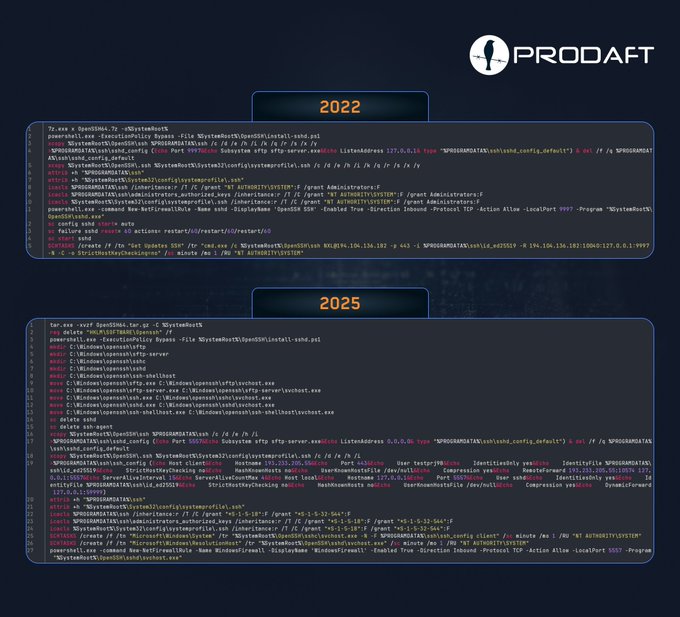The notorious FIN7 cybercriminal group, also known as Savage Ladybug, continues to rely on a sophisticated Windows SSH backdoor infrastructure with minimal modifications since 2022, according to threat intelligence analysis.
The threat actor has maintained operational consistency while using an install.bat script paired with OpenSSH toolsets to establish reverse SSH and SFTP connections for maintaining stealthy remote access and data exfiltration capabilities on compromised systems.
FIN7 has earned its reputation as one of the most prolific and financially motivated cybercriminal organizations globally, regularly targeting retail, hospitality, and financial sector companies.
The group’s persistent use of the Windows SSH backdoor demonstrates a calculated approach to maintaining tactical advantage and operational efficiency across its campaigns.
By leveraging legitimate SSH tools modified for malicious purposes, the threat actor effectively obscures its activities within normal network traffic, making detection significantly more challenging for security teams relying on traditional signature-based detection mechanisms.
The attack methodology employed by FIN7 involves deploying an install.bat script that orchestrates the installation and configuration of a compromised OpenSSH suite on Windows systems.

This approach transforms standard Windows machines into nodes capable of supporting reverse SSH tunnels and SFTP data transfers.
Once installed, these backdoors enable remote attackers to maintain persistent access to compromised networks while maintaining a low forensic footprint.
The reverse SSH architecture proves particularly effective because it initiates connections outbound from the victim network, often bypassing firewall rules designed to block inbound connections.
Operational Longevity and Minimal Evolution
What makes FIN7’s tactics particularly concerning is the group’s apparent confidence in the backdoor’s effectiveness, evidenced by minimal modifications across three years of continuous deployment.
Rather than developing entirely new tools or abandoning proven techniques, FIN7 has adopted a conservative maintenance approach, implementing only incremental changes to evade security vendor detection signatures.
This strategy reflects the operational reality that thoroughly hardened attack infrastructure, once proven effective against target organizations’ defenses, remains valuable even as it matures.
The integration of SFTP functionality within the backdoor framework provides FIN7 operators with efficient data exfiltration capabilities.
SFTP encrypted data transfers disguise theft as legitimate SSH activity, further complicating detection efforts. This technical sophistication allows FIN7 to maintain interactive remote shell access while simultaneously conducting large-scale data transfers from compromised systems.
Security teams monitoring for unusual traffic patterns may overlook SSH-based activity considered routine in enterprise environments.
Implications for Enterprise Security
Organizations facing potential FIN7 targeting should implement enhanced monitoring of SSH authentication logs, particularly focusing on unusual account creation, failed authentication attempts from non-standard source locations, and unexpected SSH client installations on Windows systems where such activity would normally be anomalous.
Network segmentation limiting SSH connectivity to approved administrative infrastructure, combined with behavioral analysis tools designed to detect reverse tunnel establishment, provides effective defensive postures against this specific threat vector.
The continued reliance on this proven backdoor mechanism underscores FIN7’s confidence in its effectiveness and the importance for security teams to maintain detection capabilities specifically designed for SSH-based persistence mechanisms deployed on Windows environments.
Follow us on Google News, LinkedIn, and X to Get Instant Updates and Set GBH as a Preferred Source in Google.
